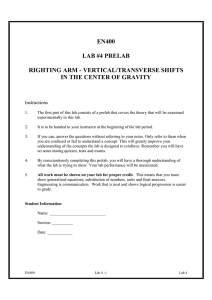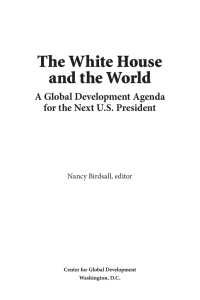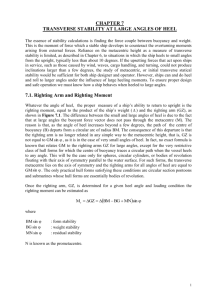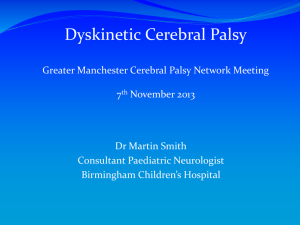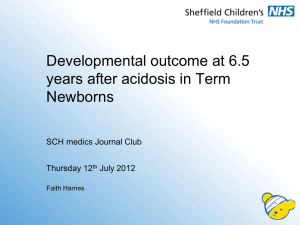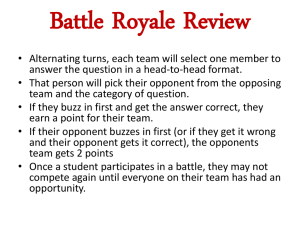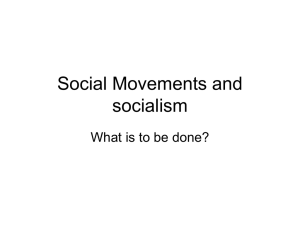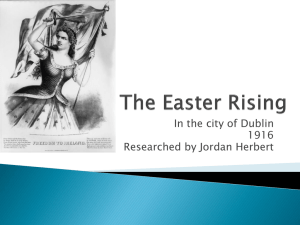Session I, part II (Motor Development: Re
advertisement
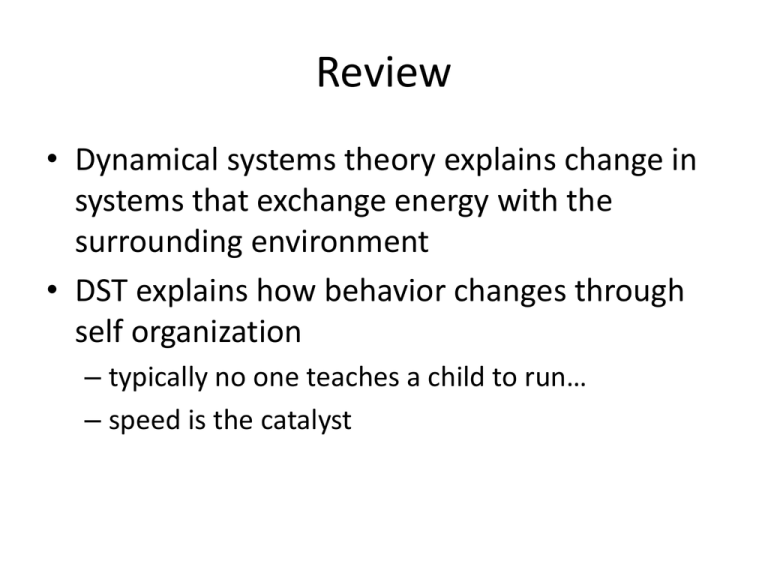
Review • Dynamical systems theory explains change in systems that exchange energy with the surrounding environment • DST explains how behavior changes through self organization – typically no one teaches a child to run… – speed is the catalyst Motor Development Re-conceptualizing Developmental Change in Movement Patterns Life Span Motor Development Evolution of a Theory & Research Program In the beginning...a clinician! a knowledge of neurodevelopmental theory a fascination with righting and equilibrium reactions a love for movement analysis Neurodevelopmental Theory development is a process of reflex integration Motor lower level automatic behavior gives way to Ctx Midbrain higher level volitional Brain stem Level control Spinal Level Neurodevelopmental Theory Progressive Positive Add Abilities End State Oriented (maturity is the end state) Neurodevelopmental Theory CNS = Cause of Change Biological Theory of Aging... Regressive Negative Loss of Abilities End state oriented (end state = death) Life Span Theory Development followed by Aging Milani - Comparetti Milani Comparetti = my personal Control Variable! Change of State Virginia... (1970s) Wisconsin (1980s) The Doctoral Experience Roberton’s Component Model Developmental Stages of Throwing Reliability of assigning Stages Developmental Change within Components of Body Action Component Model of Development Upper Limbs Axial Region Lower Limbs Lawrence & Kuypers Three descending control systems medial system – controls axial region lateral system – controls proximal limb movements in primate studies the lateral system allowed for differentiated arm movements cortical system – controls distal movements in primate studies allowed individuated finger movments Straying into Systems models Not just one big hierarchy Roberton was studying development in those systems! Applying Roberton’s Method Taking it to a new task From Throwing to Righting Learning the Research Process Righting Reactions Developed during 1st year of life Rolling to prone Up on hands and knees Into sitting Quadruped to kneeling Kneeling to Half Kneel Up to Stand Righting Reactions • Movements couple together to assume erect stance • Foundation for Physical Independence Righting Reactions First Rotational movements then Symmetrical But observations of young adults in PT school revealed all were not using symmetrical form Studies of Righting Rising to Standing from the Floor Young Adults Why Young Adults? variability in PT students impressive a very few showed symmetrical form when rising Roberton examined variability to get stages of throwing Lifespan perspective hypothesis: variation was “developmental” Sequences If person is in a stage he/she shows stable behavior characteristic of that stage If a person is moving from one stage to another shows variable behavior characteristic of those two neighboring stages Studies of Righting Rising to Standing from the Floor Young Adults Variability continued to be impressive across 10 trials Described action in each of three components of body action able to identify neighboring stages for each body region Really out on a Limb Studies of Righting Rising to Standing from the Floor Children Age differences confirmed sequences of movement pattern development identified from adult patterns of variation Component Model affirmed


